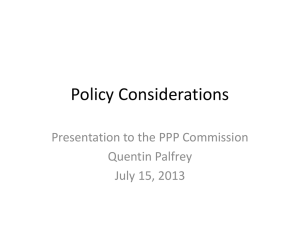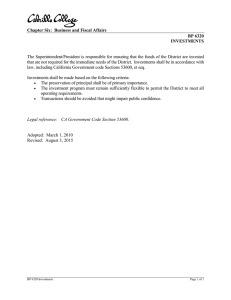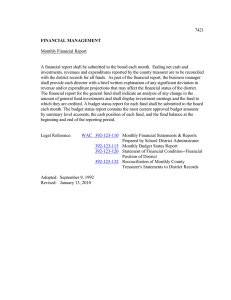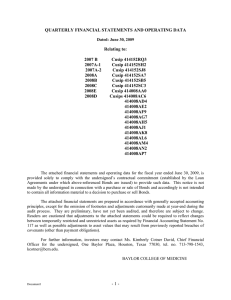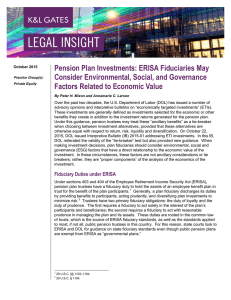B L ENEFITS AW
advertisement
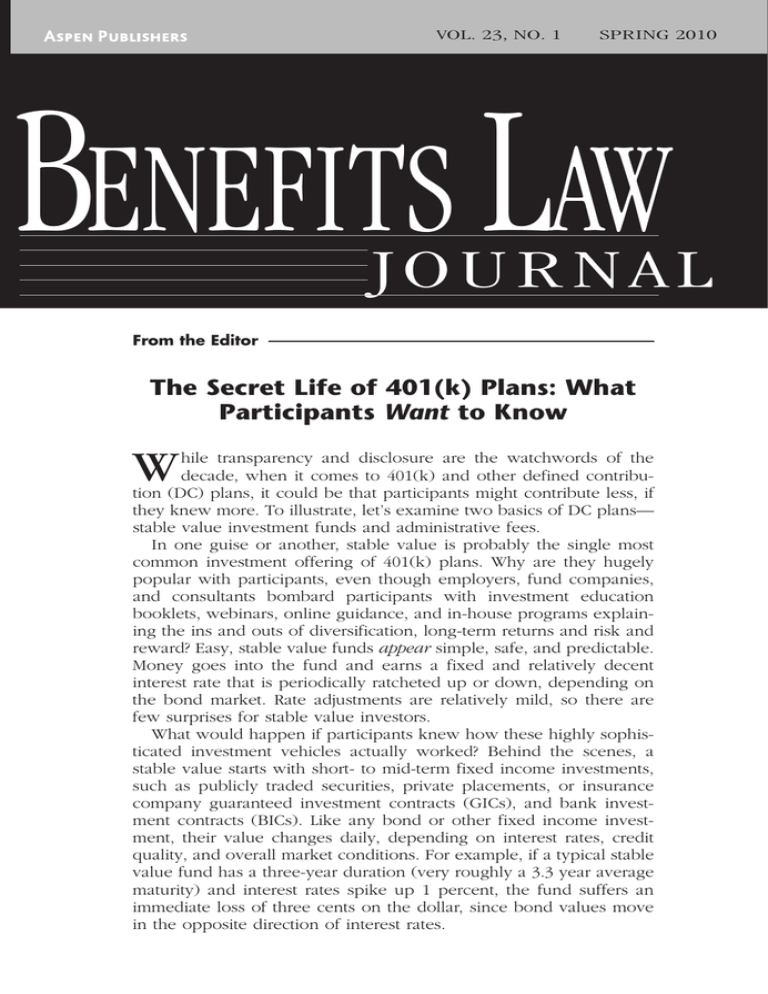
VOL. 23, NO. 1 SPRING 2010 BENEFITS LAW JOURNAL From the Editor The Secret Life of 401(k) Plans: What Participants Want to Know W hile transparency and disclosure are the watchwords of the decade, when it comes to 401(k) and other defined contribution (DC) plans, it could be that participants might contribute less, if they knew more. To illustrate, let’s examine two basics of DC plans— stable value investment funds and administrative fees. In one guise or another, stable value is probably the single most common investment offering of 401(k) plans. Why are they hugely popular with participants, even though employers, fund companies, and consultants bombard participants with investment education booklets, webinars, online guidance, and in-house programs explaining the ins and outs of diversification, long-term returns and risk and reward? Easy, stable value funds appear simple, safe, and predictable. Money goes into the fund and earns a fixed and relatively decent interest rate that is periodically ratcheted up or down, depending on the bond market. Rate adjustments are relatively mild, so there are few surprises for stable value investors. What would happen if participants knew how these highly sophisticated investment vehicles actually worked? Behind the scenes, a stable value starts with short- to mid-term fixed income investments, such as publicly traded securities, private placements, or insurance company guaranteed investment contracts (GICs), and bank investment contracts (BICs). Like any bond or other fixed income investment, their value changes daily, depending on interest rates, credit quality, and overall market conditions. For example, if a typical stable value fund has a three-year duration (very roughly a 3.3 year average maturity) and interest rates spike up 1 percent, the fund suffers an immediate loss of three cents on the dollar, since bond values move in the opposite direction of interest rates. From the Editor The folks who invest in stable value would not be happy if they saw their account dip by 3 percent. They might look around for an even more conservative investment such as a treasury money market or, worse, stop making 401(k) contributions altogether. The typical stable value investor can live with equity funds outperforming their fund by 20 percent, maybe even directing a bit of their contributions into these riskier investments, and will enjoy gloating when markets crater. But these participants cannot live with any decline in their stable value accounts; they only want to see their stable value funds in a slow and steady, one-way climb up in value. To cover the inevitable movements in the value of a stable value fund’s bonds and other holdings, financial alchemists add an insurance company or bank guaranty. These “wrappers” protect participants from losses when they switch plan investments, retire, or otherwise withdraw their funds from the plan by ensuring they receive the full book value of their account, even if the underlying bonds and other fixed income investments are worth less. (Stable value is not bullet-proof. Participants can realize a loss if the guaranty evaporates upon contract cancellation (say, on plan termination) or if the insurance company goes belly up.) To pay for the guaranty, there’s also a relatively modest charge for the wrapper that is deducted from the fund’s returns. While participants pulling their money out when the fund’s actual market value is down get exactly the safety and stability they expected, the investment loss doesn’t go to Money Heaven. The loss is shared by the remaining participants via a gradual, behind-the-scenes reduction in the interest rate credited to their accounts—that is, they’re credited with less than the fund actually earns. This adjustment continues until the fund reaches equilibrium: book equals market value. The adjustment mechanism also means that participants who invest new money in a stable value fund when book value is above market value (3 percent in the example) receive a lower interest rate than if they were investing “fresh.” Of course, it’s a two-way street. When market value is above book—such as when interest rates are falling, it is the withdrawing participants who lose out, while the remaining participants benefit. Ultimately, for a long-term safety-minded investor, a stable value fund is an irrational choice. Investing in a fixed income fund with the identical portfolio would avoid the extra cost of the wrap protection and be immune from the economic consequences of participants jumping ship when book is above market. So, should the Department of Labor (DOL) declaim stable value funds to be imprudent violations of ERISA or make participants read a detailed stable value disclosure before investment? Heck no! Participants do not care what lies beneath the surface of their stable value funds. All they want is a slow, steady, and apparently effortless appreciation of their accounts. That’s why participants choose stable value over bond funds. BENEFITS LAW JOURNAL 2 VOL. 23, NO. 1, SPRING 2010 From the Editor On plan expenses, participants may want to know how much they’re paying, but not what they’re paying for. I’ve seen plan participants actually protest a change to a transparent fee structure that will save them money. Under ERISA, recordkeeping and other administrative costs (except for allusive settlor functions) typically are paid by the 401(k) or DC plan. It’s also fairly typical for these costs to be covered through revenue sharing, 12b-1 rebates, or the profit margins embedded in investment management charges. Despite the largely unsuccessful efforts of some class action law firms, this is perfectly legal. Employers and recordkeepers may be aware of how fees are allocated between recordkeeping and fund management, but participants typically see only their final cost: the expense ratios of the available investments. What if an employer decides to break out these costs—say by directly debiting participant accounts a flat dollar amount or small basis point charge for administration and recordkeeping, and separately deduct for fund management? Any revenue sharing and the like could then be rebated directly to the accounts of participants whose investments generated the revenue. In my experience, an employer who switches to such an “itemized” structure will be met with complaints, disapprobation, and dissatisfaction from employees, even if it is demonstrated to save them money. Being human and thus somewhat irrational, participants don’t mind paying investment fees nearly as much as being charged a relatively paltry amount for a recordkeeper to hold and track their own money. Indeed, annoyance with a per-account administration fee can, in my experience, reduce plan participation. As the DOL considers whether and how retirement plans should jump on the transparency and disclosure bandwagon, thought should be given to how much participants really want to know, the impact on participation, and other unintended consequences. After all, if people knew too much of what lay beneath the surface, no one would ever eat a hot dog, or get married, or have children. David E. Morse Editor-in-Chief K & L Gates LLP New York, NY Reprinted from Benefits Law Journal Spring 2010, Volume 23, Number 1, pages 1-3, with permission from Aspen Publishers, Inc., Wolters Kluwer Law & Business, New York, NY, 1-800-638-8437, www.aspenpublishers.com Law & Business BENEFITS LAW JOURNAL 3 VOL. 23, NO. 1, SPRING 2010
